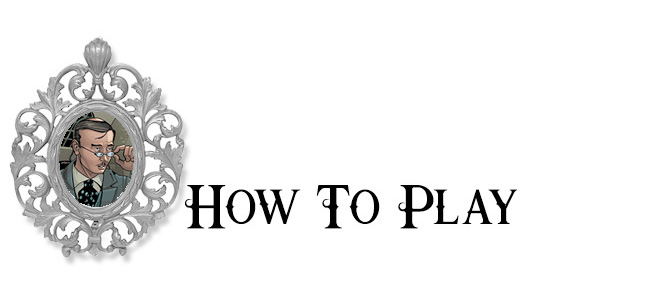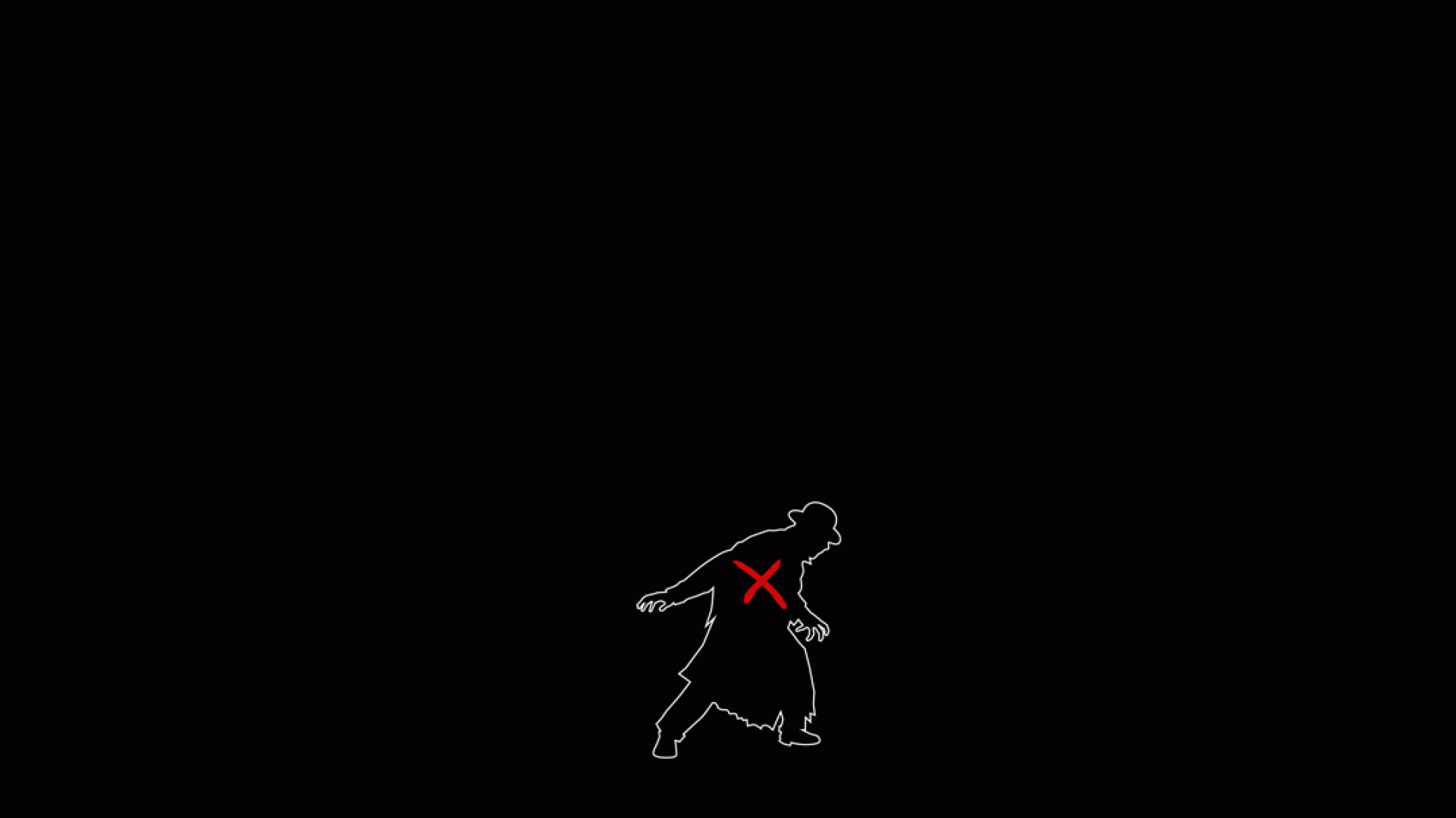
#1) Do not read the book straight through as you would a normal graphic novel.
#2) Read the introductory scene starting on page 5–do NOT read past the stop sign in the lower corner.
#3) At the conclusion of the introductory scene on page 10, begin your investigation by deciding where to go next.
- In order to proceed to another scene, you must identify a suspect to pursue, or location to investigate. We refer to these in the detective business as “leads.”
- When you have someone, or somewhere in mind, turn to the ‘phone book-like’ London Directories at the back of the book.
(There are 2 directories: a Business Directory with locations: banks, hospitals, etc. and a Personal Directory with individual names.) - Find your target and locate the associated page number.
#4) OPTIONAL: You may want to keep a detective’s journal…
- And jot down the lead you’re pursuing and the page number associated with it. You can play the game without doing this, but when you’re a bunch of chapters into the story, you may wish you had. 😉
#5) Navigate to your new location in the book.
— If the lead you pursue is good, you’ll encounter another chapter in the story to continue your investigation! You identify another chapter in the story by a green page number at the bottom of the page, and a green address sign at the top. You never pick up the narrative in the middle of a scene-pages within a scene always have a black page number.
— If the lead you pursue is bad, you’ll reach what we call a “Dead End“; a fancy historic Victorian Era Advertisement, or a single-page side micro-narrative.
DEAD ENDS
There are a three types of Dead Ends. You don’t have to memorize their names, but you should be familiar with all of them.
The first is a “Mid-scene Dead End,” a page in the middle of a chapter.
For example, below is page 6 from the book (or the second page of the introductory scene). If the directory leads you to page 6, you know your lead is a Dead End because the page number at the bottom is black (instead of green) AND the page lacks a street address sign above. // You won’t often land on a Mid-scene Dead End. //

The majority of the Dead Ends you’ll actually encounter are “Ad Dead Ends.” These full page Victorian London advertisements are authentic ads from the period! We hope you stop and enjoy them, don’t worry, the lad is already dead, he won’t mind if your investigation takes a few more minutes.


The final type of Dead End is a “Micro-story.”
These single page narratives showcase Mr. Wiggins and his partner, but have nothing to do with the case narrative.
Notice the micro-stories have both a green page number and a green address. Even though a lead that brings you here is a bad lead, you get the green light to read the short narrative and lose yourself in a momentary distraction.
Remember 1888 London was the apex of the modern world. Even the busiest detectives working the most important cases engaged with daily city life!
If you encounter a Dead End, don’t worry, it doesn’t mean your investigation is over! Simply go back to your notes and pursue a different lead through the directories.
#6) Solve the case.
- At any time you can choose to solve the crime, by going to the last page of the book, opposite the red page.
- Here you will be prompted with a few questions to note the answers in your detective’s journal or scrap paper.
- When you’ve answered all the questions, meet your mentor and employer, one Sherlock Holmes at the Criterion Bar on page 111. Here he’ll break down the case and provide the murderous solution.
- The last paragraph of the Criterion Bar gives all the answers to the questions. Turn back to the last page of the book, and score your results to see how you truly stack up as a Victorian era detective!
BE WARNED: You only get one crack at solving the case. So don’t attempt it until you feel you’ve really got the pulse of the crime at hand.

#1) On page 3, right after the rules, you’ll find a page of the daily newspaper “The Morning Standard.”
- The paper is there to help set the tone and mood of the game, but also may contain important information to the case, and/or direct leads.
Throughout the cases on the Sherlock Mysteries mobile app, the newspaper plays different roles of significance to the case. In some cases it’s intergral to solving the case… in others, it’s not required reading at all.

#1) How do I know I’m ready to solve the case?
- Practically speaking, “You’re ready to solve the case, when you feel satisfied with your investigation.” Some folks will want to try and find/read every possible chapter… others find it challenging to try and solve the case having read fewer chapters, relying more on their own deductions.Ultimately, the goal of the book is to solve the murder. If you’re confident you’ve figured out who’s responsible you’re pretty much there.
You may want to spend some extra time trying to piece together “exactly” why and how it happened. The more details you compile, the better you’ll do with the solve questions.
#2) I can’t find resolution on some of the things mentioned, what do I do?
- The Man Who Died Twice mimics a real Victorian murder investigation. In real-life, a narrator doesn’t appear to explain all the bits and pieces to the detectives. There are many subtle clues, hints, and information to give a solid picture of the narrative, however, some things are simply never explained.For example, “How might someone have come about a certain bit of information?” or “Why did a person act in a certain manner at a specific juncture?” The how and why are not always needed to see the events as they unfolded and understand the crime at hand.
That said, only an astute detective can imagine, deduce, and read between the lines to get the complete picture.
